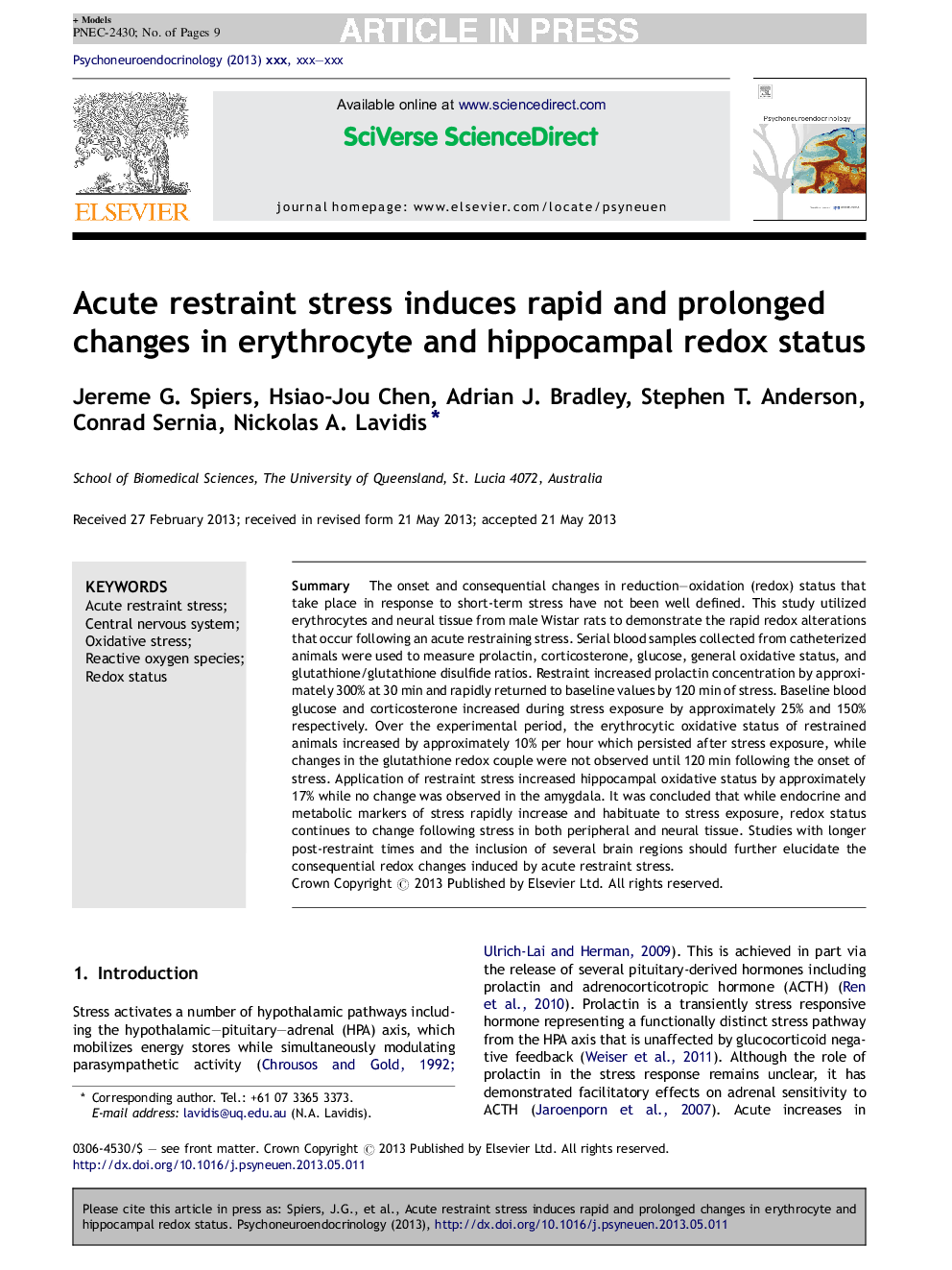| کد مقاله | کد نشریه | سال انتشار | مقاله انگلیسی | نسخه تمام متن |
|---|---|---|---|---|
| 10305776 | 547032 | 2013 | 9 صفحه PDF | دانلود رایگان |
عنوان انگلیسی مقاله ISI
Acute restraint stress induces rapid and prolonged changes in erythrocyte and hippocampal redox status
ترجمه فارسی عنوان
استرس مهلک حاد باعث تغییرات سریع و طولانی در وضعیت اریتروسیت و ردوکسی هیپوکمپ می شود
دانلود مقاله + سفارش ترجمه
دانلود مقاله ISI انگلیسی
رایگان برای ایرانیان
کلمات کلیدی
موضوعات مرتبط
علوم زیستی و بیوفناوری
بیوشیمی، ژنتیک و زیست شناسی مولکولی
علوم غدد
چکیده انگلیسی
The onset and consequential changes in reduction-oxidation (redox) status that take place in response to short-term stress have not been well defined. This study utilized erythrocytes and neural tissue from male Wistar rats to demonstrate the rapid redox alterations that occur following an acute restraining stress. Serial blood samples collected from catheterized animals were used to measure prolactin, corticosterone, glucose, general oxidative status, and glutathione/glutathione disulfide ratios. Restraint increased prolactin concentration by approximately 300% at 30Â min and rapidly returned to baseline values by 120Â min of stress. Baseline blood glucose and corticosterone increased during stress exposure by approximately 25% and 150% respectively. Over the experimental period, the erythrocytic oxidative status of restrained animals increased by approximately 10% per hour which persisted after stress exposure, while changes in the glutathione redox couple were not observed until 120Â min following the onset of stress. Application of restraint stress increased hippocampal oxidative status by approximately 17% while no change was observed in the amygdala. It was concluded that while endocrine and metabolic markers of stress rapidly increase and habituate to stress exposure, redox status continues to change following stress in both peripheral and neural tissue. Studies with longer post-restraint times and the inclusion of several brain regions should further elucidate the consequential redox changes induced by acute restraint stress.
ناشر
Database: Elsevier - ScienceDirect (ساینس دایرکت)
Journal: Psychoneuroendocrinology - Volume 38, Issue 11, November 2013, Pages 2511-2519
Journal: Psychoneuroendocrinology - Volume 38, Issue 11, November 2013, Pages 2511-2519
نویسندگان
Jereme G. Spiers, Hsiao-Jou Chen, Adrian J. Bradley, Stephen T. Anderson, Conrad Sernia, Nickolas A. Lavidis,
